The tiny Marasmius mushrooms look like little fairy parachutes or pinwheels. And their magic goes beyond just their looks. They can spring back to life after looking completely dead! These tough little fungi survive in very dry and hot weather and play an extremely important role in forest ecosystems.
The Marasmius family has about 500 species around the world, and there are many species in North America. The fairy ring mushroom (Marasmius oreades) is the most well-known in the family. But there are so many more, and they are such a treat to find, as much for their cuteness as for their ethereal vibe.
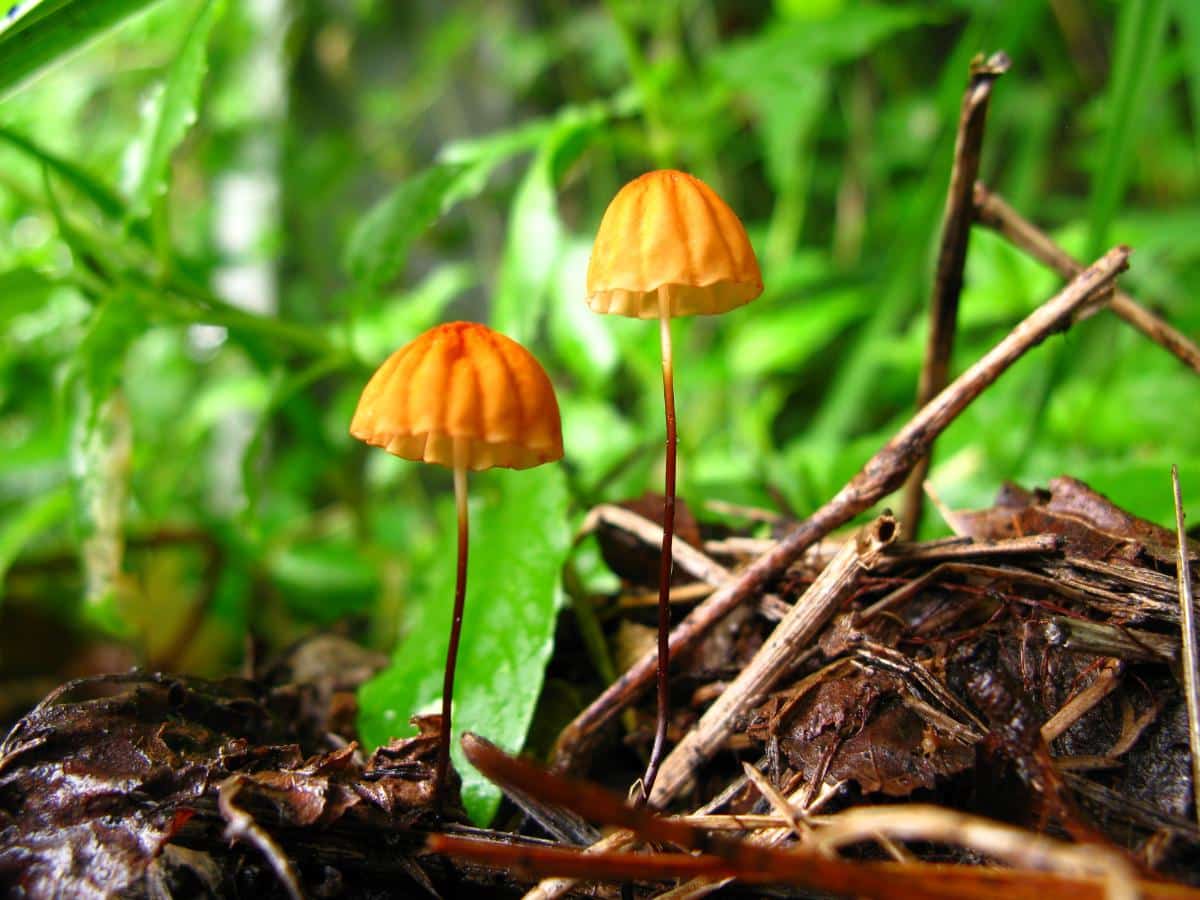
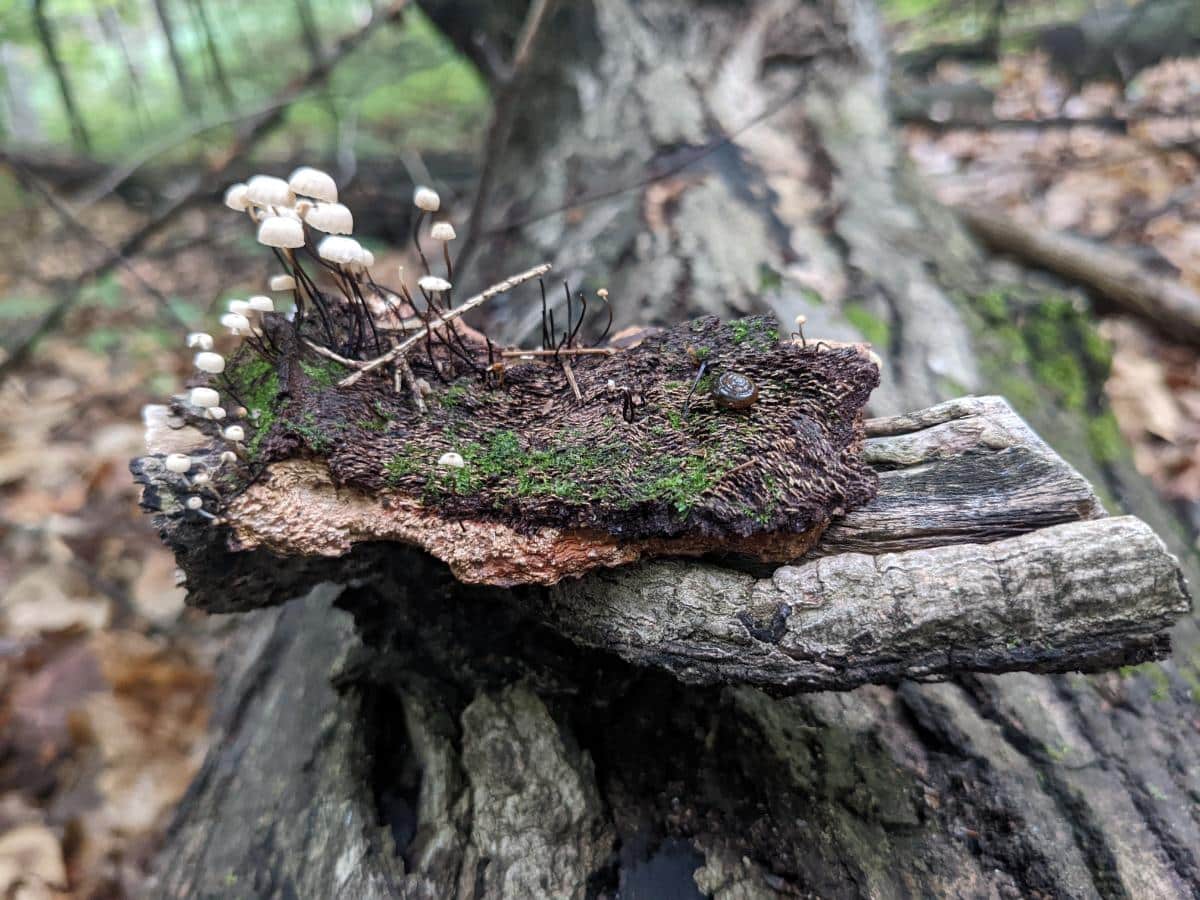
Jump to:
All About Marasmius Mushrooms
The genus Marasmius is in the family Marasmiaceae. The name comes from the Greek word marasmos, which means “drying out; withering”.
Marasmius mushrooms are so named for their unique survival skill. When it’s very dry, they shrink and shrivel up and wait for rain. They look like they are dying. Once they get a little water, though, they return to their original shape. This ability helps them release spores when the conditions are best for growth.
Marasmioid mushrooms have several unique features. They have white spore prints and small, flat-to-bell-shaped caps. Many other small mushrooms have cone-shaped caps. Their stems are thin and tough, which helps them survive. These mushrooms grow on needle duff, leaf litter, or woody debris.
Many people think all mushrooms in fairy rings are Marasmius species, but that’s not true. Other species like the edible meadow mushroom and the toxic false parasol grow in fairy rings, too. And, not all Marasmius mushrooms form fairy rings. It is highly dependent on species. So, the link between fairy mushrooms and fairy rings is not one for one.
Marasmius mushrooms grow in tropical and temperate regions. They are mainly saprotrophic fungi that get nutrients from decaying plants. Some like leaf litter, while others prefer twigs or sticks and being around specific trees. They’re amazing at breaking things down. Some species can digest cellulose and hemicellulose while barely touching lignin.
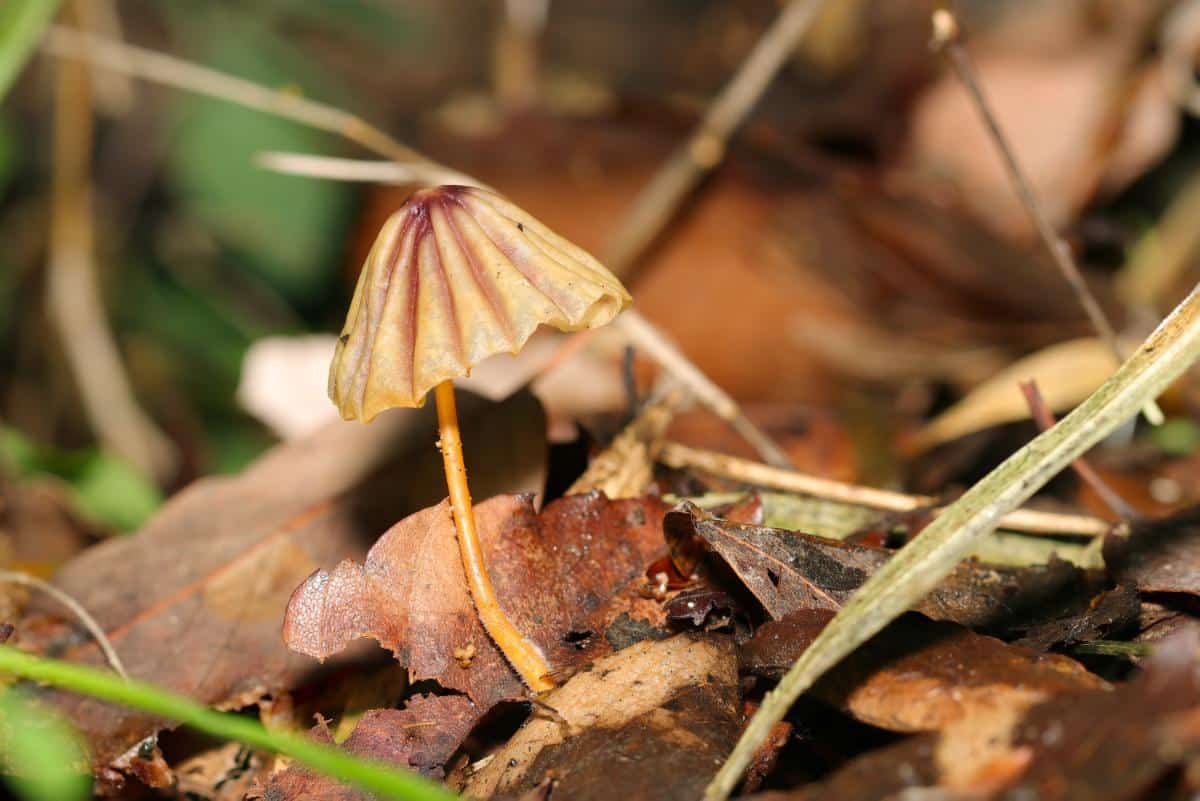
The Role of Marasmius Fungi in Forest Ecosystems
Marasmius mushrooms are part of nature’s recycling system. They colonize leafy and woody litter materials extensively. Some species, like Marasmius palmivorus, are super strong decomposers with some interesting tactics. They break down cellulose and hemicellulose in plant tissue while barely touching the cell walls. The plant material turns a brown color due to this selective decomposition.
Some tropical Marasmius species have really neat structural adaptations, too. They extend their rhizomorphs (root-like filaments) above ground to create a dense, interconnected web that traps falling leaves, sticks, and twigs. This lets them decompose material before it reaches the forest floor, which speeds up the process.
These mushrooms have also built interesting relationships with birds. Scientists found the presence of Marasmius rhizomorphs in nests of 98 bird species from 27 families across tropical and nearctic regions. The birds seem to gather the rhizomorphs carefully and weave them into their nests.
There are many theories as to why the birds choose the fungi filaments, but there is no clear answer yet. Some suggestions include simply because it is available, that it might be stronger than other building materials, or because the mycelium contains antibiotic and anti-carcinogenic properties.
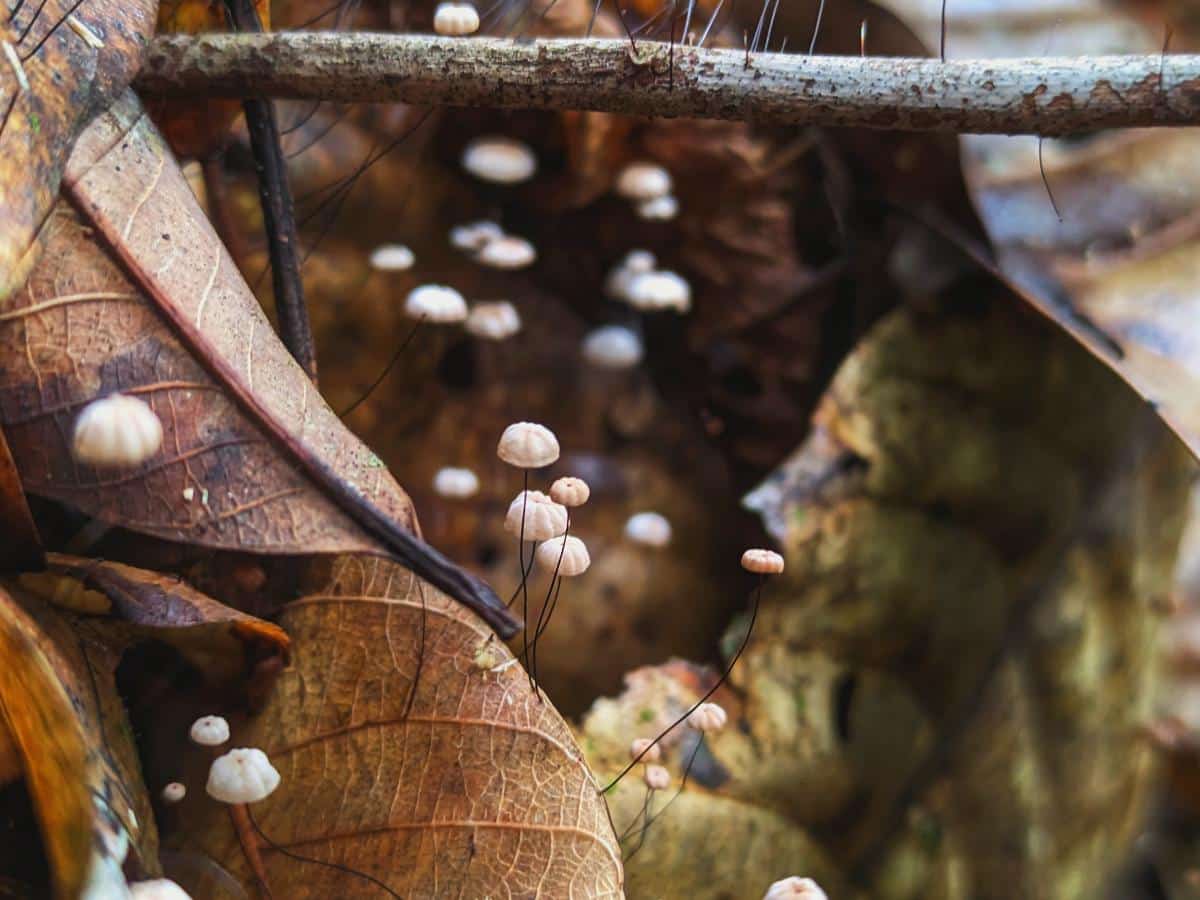
Pinwheel Marasmius Mushroom Identification
Habitats
Each Marasmius species has its preferred habitat. Most grow in deciduous woods on the leaf litter, twigs, and forest debris. Others fruit in grassy areas like lawns, meadows, and coastal dunes.
Cap
Marasmius mushroom caps range between 1-5 inches across, though you’ll usually find them between 1-2 inches. In general, they are very small mushrooms, with just a few outliers that are a bit larger. The caps start out bell-shaped, and the cap edges are rolled under. With age, they become broadly rounded (like an umbrella or parasol) or flat. Many will have a distinct central bump or umbo in the middle of the cap.
The cap colors range from pale tan to buff and are rather dull overall. But there are also some very brightly colored and downright stunning species, as well. The cap surfaces are smooth and dry. Many species have vertically lined caps or pleated caps, which divide the cap into segments.

Gills
The gills of parasol mushrooms are widely spaced and white to pale cream in color. The gills might attach to the stem, grow completely separate from it, or run down it. It varies quite a bit with species. Some species have gills that branch out in fork patterns or don’t touch the stem at all. The spore prints are white to pale cream, a key feature that separates them from other species.
Stem
The stems are tough and wiry yet stay flexible. You can bend the mushrooms back and forth without breaking them. The stems grow 3/4 “-3” long and are very thin. They have equal thickness throughout or are slightly wider at the base. The top of the stem is whitish, and the bottom is darker brown or blackish.
Taste and Smell
The smell and taste help identify these mushrooms. Most Marasmius species have a mild scent that’s not very distinct. Others have a nutty or mushroomy smell.
Key Marasmius Identification Features
- Small, cap usually under 3” wide
- Flat or rounded cap (not cone-shaped)
- Thin, wiry stem (usually dark colored)
- Growing on leaves, pine duff, and twigs
- White spore print
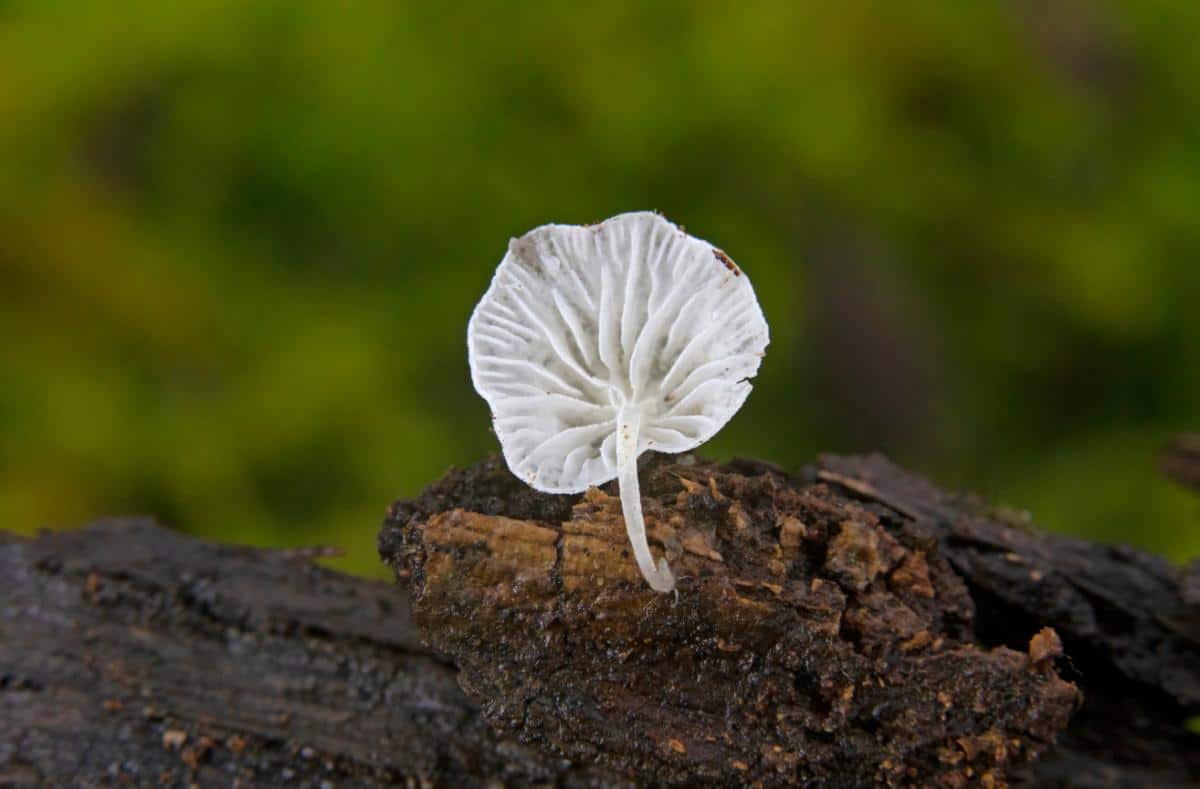
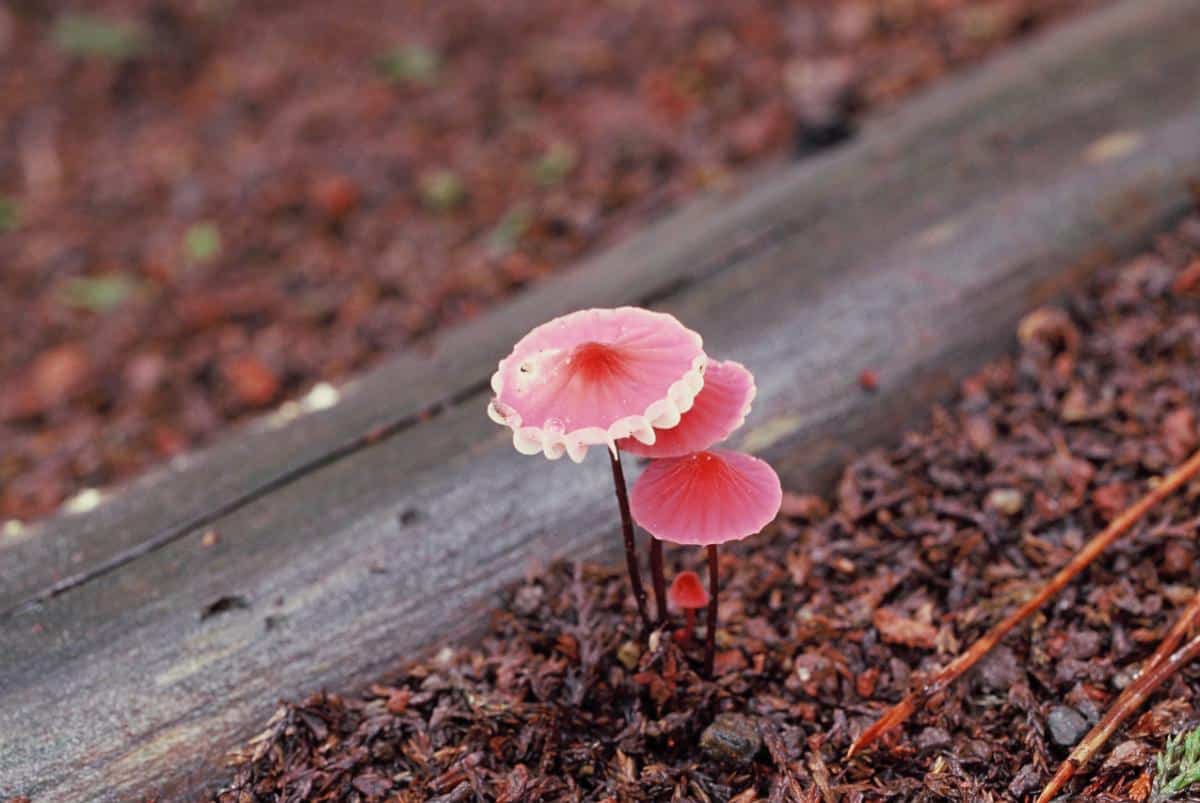
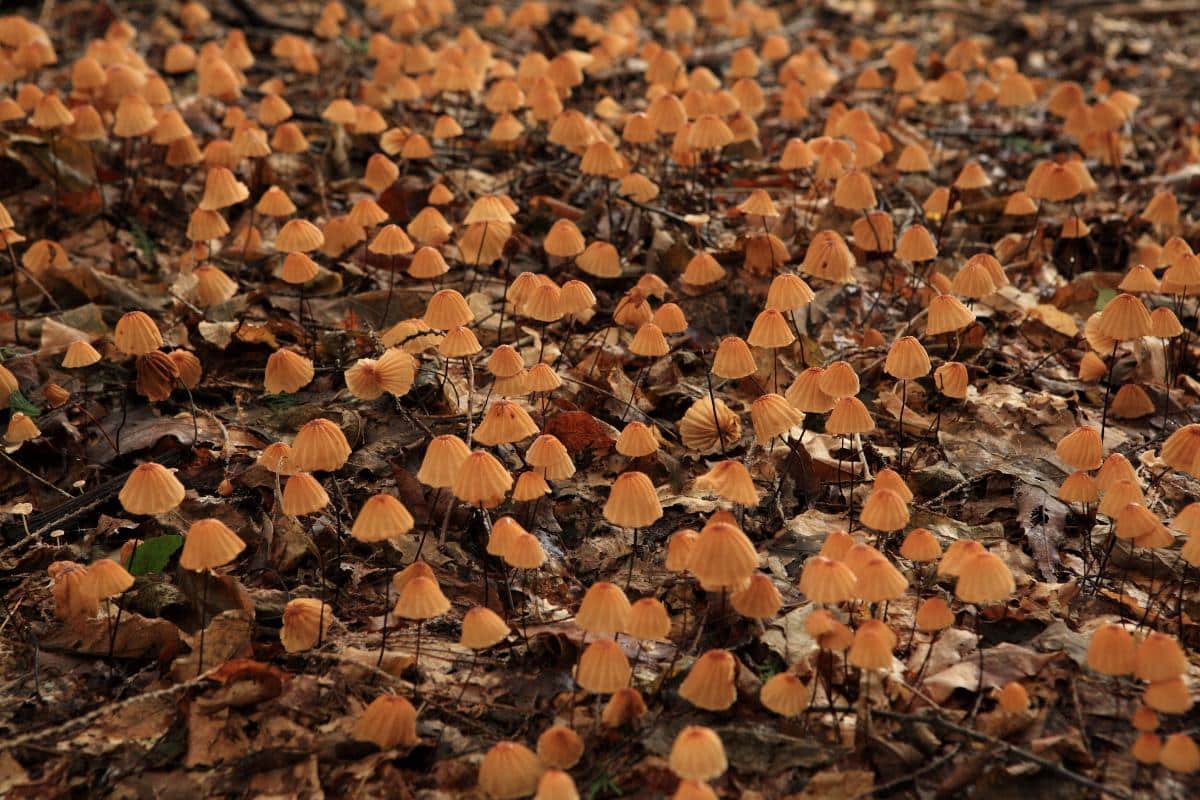
Marasmius Species in North America
These are eleven parasol and parachute-like fairy mushrooms that appear throughout North America. This list is not exhaustive by any means – there are likely several dozen Marasmius species in North America.
Marasmius oreades (Fairy Ring Mushroom)
The fairy ring mushroom often forms classic fairy rings in lawns, meadows, and grassy areas. It doesn’t always appear in fairy rings, though. This mushroom has a bell-shaped to broadly rounded cap that is 1-5 inches wide. It is pale tan or buff and has a central bump. The stem is tough and pliable. Gills on this species are white to pale tan and widely spaced. This is a choice edible mushroom for its firm, chewy texture and rich flavor.
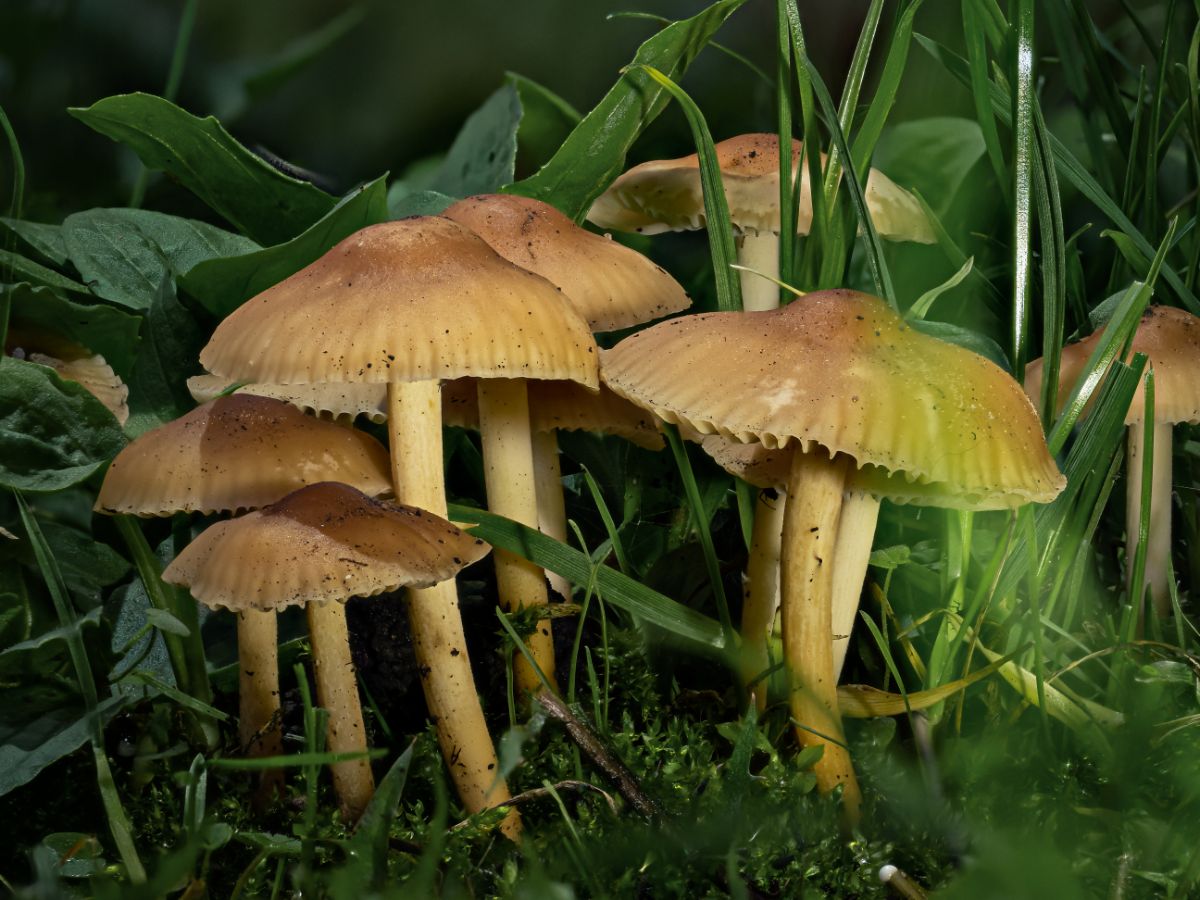
Marasmius siccus (Orange Pinwheel)
The orange pinwheel mushroom is eye-catching with its vibrant orange umbrella-shaped cap. The cap usually has a central upraised center (umbo), and it is pleated, meaning it has distinctive vertical lines. It is a very small mushroom, averaging 0.5-2.5 inches across. The gills are whitish, and it has a tough, shiny stem that is pale at the top and reddish-brown below. It grows on leaf litter and woody debris in hardwood forests east of the Rocky Mountains.
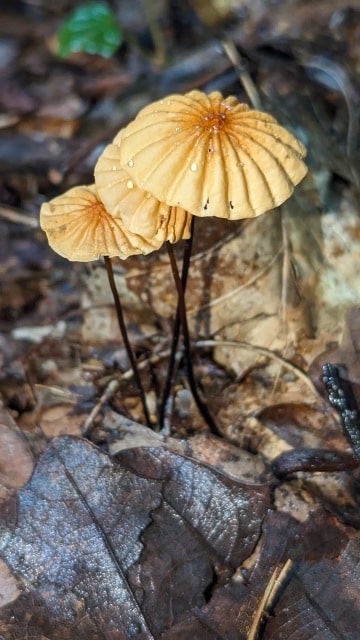
Marasmius rotula (Pinwheel Mushroom)
The pinwheel mushroom or collared parachute has small whitish caps measuring up to 3/4 inch wide. The caps are thin and membranous with a distinctive sunken center. They are also pleated, which means they have distinctive vertical lines. The cap edges are scalloped, and the mushroom looks like a tiny wheel from below. The gills are widely spaced, white, and attach to a collar that encircles the stem rather than connecting directly to it. The slender, wiry stems are shiny, hollow, and blackish-brown. They measure up to 3 inches long.
This mushroom typically grows in clusters on decaying hardwood debris such as fallen twigs, branches, and logs from spring through fall east of the Rocky Mountains. It can be distinguished from the similar Marasmius capillaris by its habitat (growing on wood rather than leaves) and its more squarish cap profile when viewed from the side.
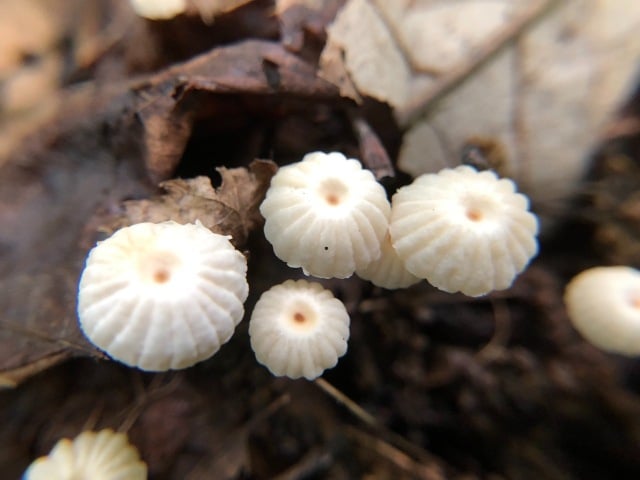
Marasmius capillaris
Marasmius capillaris is a very small parasol mushroom with a cap measuring just 0.08-0.6 inches across. It starts out rounded but develops a central depression with distinct pleats. The cap is whitish to pale grayish-brown and has widely spaced whitish gills attached to a tiny collar encircling the stem. Its thin, wiry stem grows up to 2.4 inches long and is pale at the top and dark brown or black below. This species is found growing abundantly on fallen oak leaves and other hardwood debris in eastern North American forests.
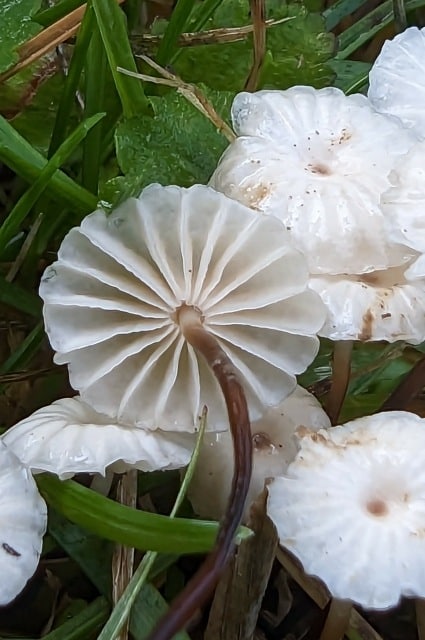
Marasmius pulcherripes (Rosy Parachute)
This Marasmius is stunning with its pinkish-rose pleated cap with a darker center. It grows on conifer litter, especially white pine needles. This species has widely spaced white or pinkish gills and white spore prints. The thin, wiry stem is light pinkish at the very top and reddish-brown to blackish below. This species grows throughout eastern North America.
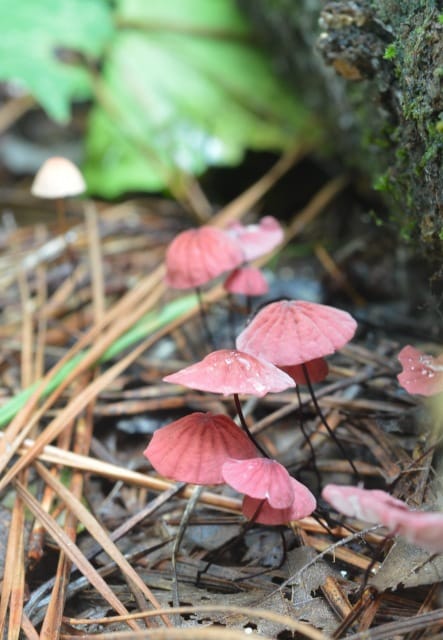
Marasmius candidus/Marasmiellus candidus (Fairy Parachutes)
This white fairy mushroom forms clusters on small logs, twigs, and canes in conifer and hardwood forests. The cap is white, small, only 0.6-4 inches across, and rounded when young. As it ages, it becomes flat with a sunken center. M. candidus develops pinkish or yellowish stains as it matures. The gills are white, very widely spaced, and run down the stem slightly. The stem is white but is often covered with thin, fuzzy brown to black hairs. This species is widely distributed across North America but may be more common on the West Coast.
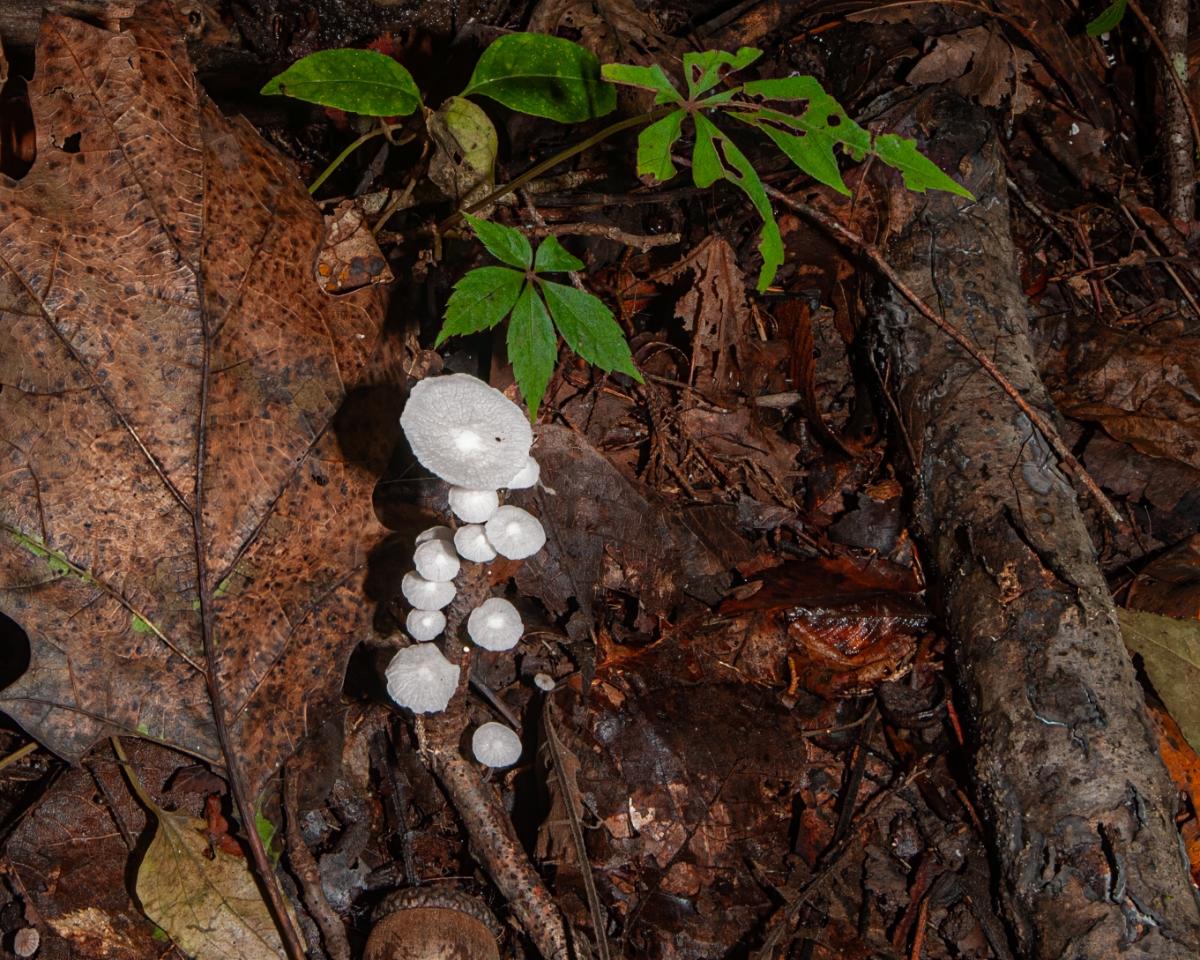
Marasmius sullivantii
Marasmius sullivantii has a reddish-orange to rust-colored cap measuring up to 1 inch across. The cap starts rounded and then flattens with age. It is undecorated and has faintly lined margins. Its gills are white (occasionally with pinkish edges when young) and either attached to or free from the stem. The stem measures 0.4-1.6 inches long and is white at the top, orangish in the middle, and reddish-brown or black at the base. It is covered with very fine silky hairs when fresh.
This species grows gregariously in hardwood forests, particularly under white oak trees. It appears during the summer and fall east of the Rocky Mountains.
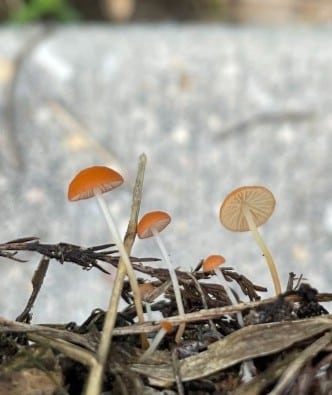
Marasmius felix
This little fairy mushroom grows solely on sycamore leaves. M. felix starts with a pale whitish cap that then changes to pinkish-brown. The gills are whitish and change to pinkish with age. They are attached to the stem and widely spaced. The stem is lighter colored at the very top, then brownish to blackish below, and very thin and wiry. This mushroom is found where there are sycamore trees.
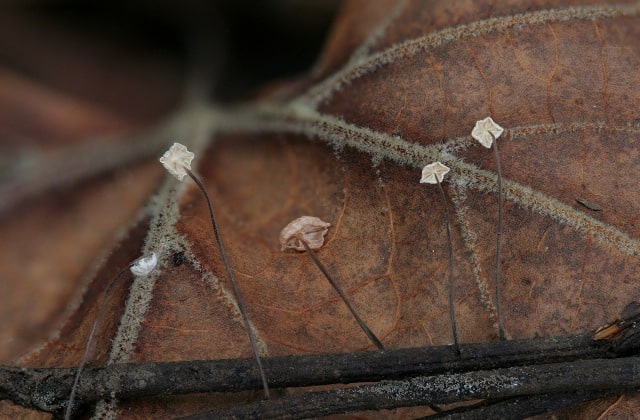
Marasmius cohaerens (Bristled Parachute)
This species grows in small groups on woody debris and leaf litter in hardwood forests. It is rather bland looking, with a tan to brownish cap and gills. The stem is whitish at first, but then turns tan to darker brown with age. It appears in early summer to fall in eastern North America.
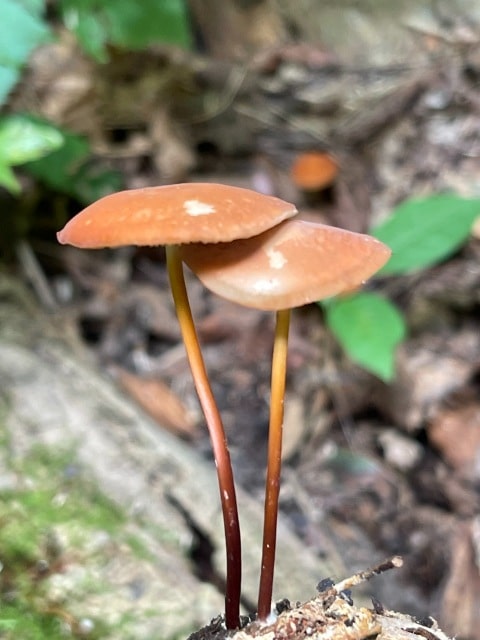
Marasmius plicatulus (Red Pinwheel)
This velvety mahogany-brown to rusty-brown cap of M.plicatulus really makes it stand out. The cap averages 1-4 inches and is rounded when young, but flattens out with age. Gills on this species are widely spaced and whitish to yellowish. It has a very tall 5-11 inch stem that is light pinkish at the very top and purplish-red below. M. plicatulus grows on leaves and woody debris in hardwood and conifer forests from late fall through mid-winter. It is a West Coast species.
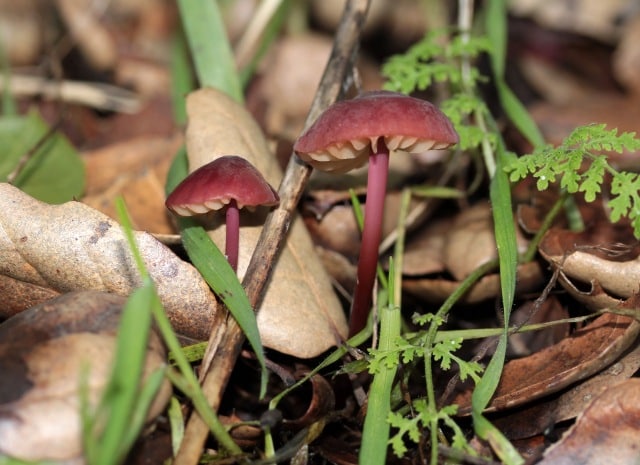
Marasmius nigrodiscus
M. nigrodiscus has an impressive cap for a fairy mushroom – it grows up to 11 inches. The cap is dark brown or reddish-brown with creamy white or pale brownish edges. The gills are whitish and attached to the stem. Stems of this species are white to light brown. It grows in conifer and hardwood forests across eastern North America.
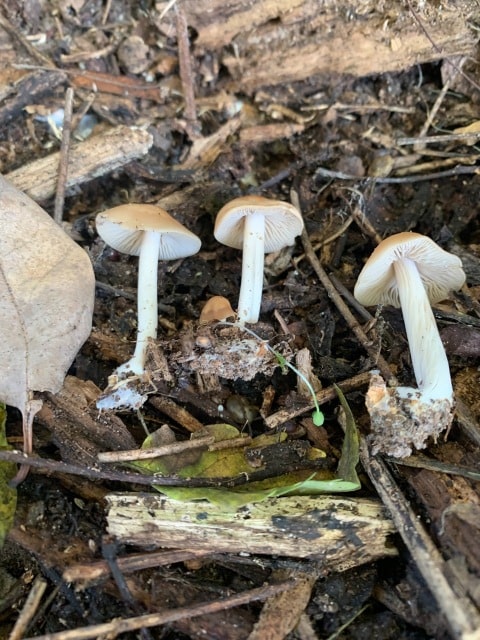
Marasmius Edibility
The fairy ring mushroom (Marasmius oreades)is the only species in this group that is commonly foraged. These mushrooms get their sweetness from trehalose sugar, which helps them bounce back amazingly well after being dried.
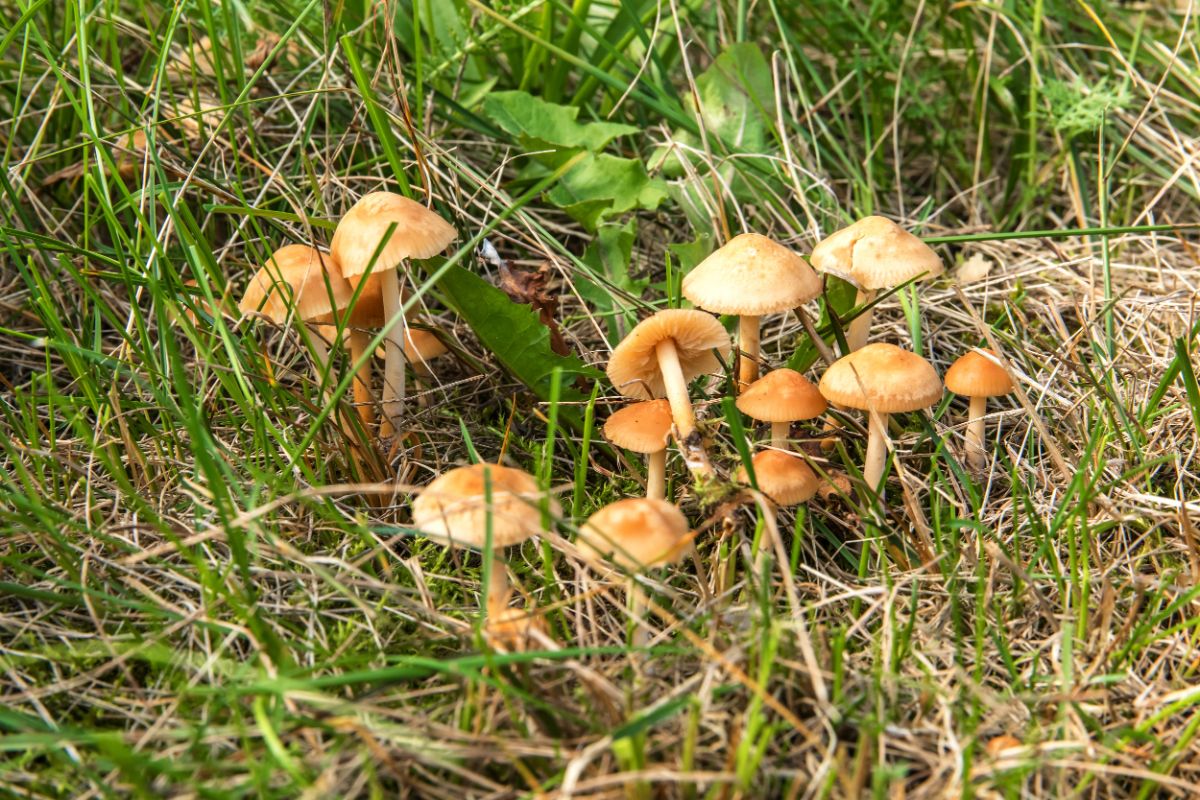
Marasmius Lookalikes
Fool’s Funnel (Clitocybe dealbata, Clitocybe rivulosa)
This is the greatest risk as a toxic species because it shares the same habitat as fairy ring mushrooms. The fool’s funnel is white to gray and doesn’t have the upraised cap center like Marasmius oreades. Most importantly, it has closely spaced decurrent gills, which are quite different from the well-spaced, attached gills of the true fairy ring mushroom.
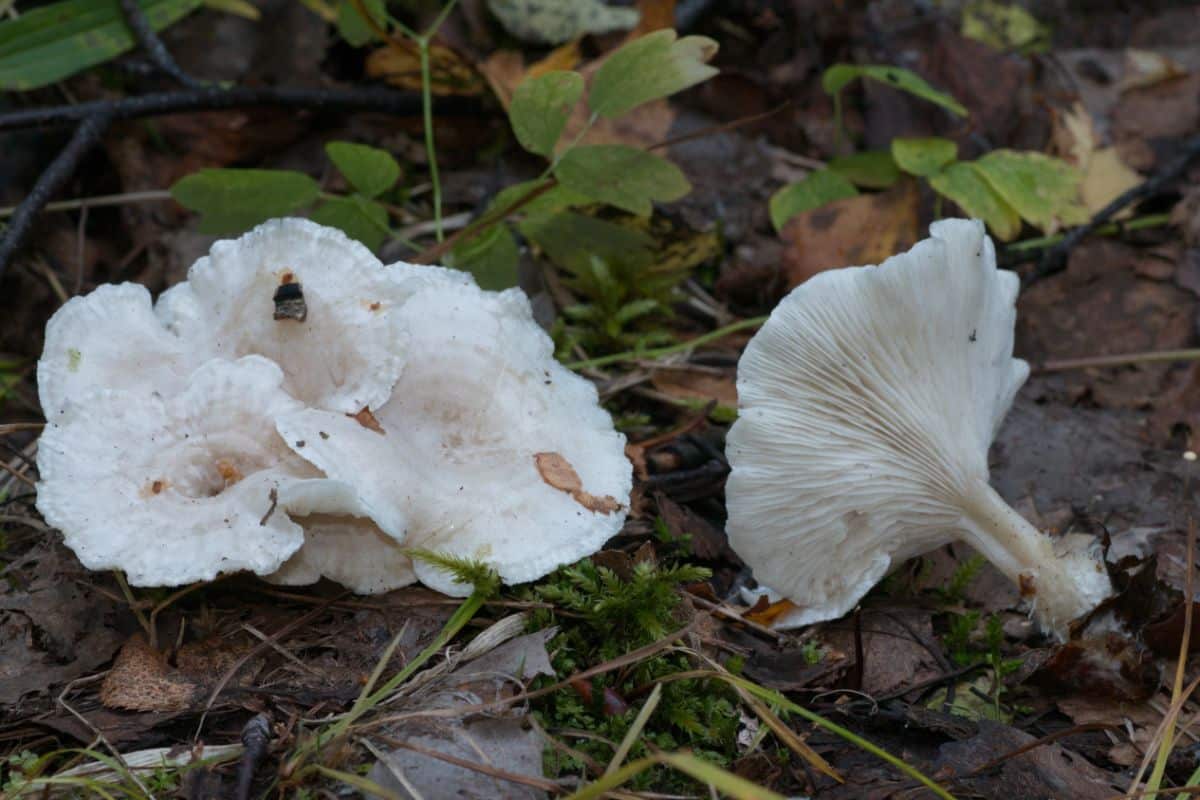
Marasmiellus
They look remarkably like the pinwheel and parachute mushrooms in Marasmius. In fact, the taxonomy between these two groups is cross-veined and confusing, with many having been named Marasmius as some point. You may have noticed that one species described further up, the Fairy Parachute, is now Marasmiellus candidus. To get an accurate identification, you usually need to do some microscopic examination since visual features alone might not be enough.
Shanklets (Collybia species)
These are also very tiny mushrooms with rounded or flat whitish caps and widely spaced gills. The primary difference is that they grow on old and decomposing mushroom bodies of other species.
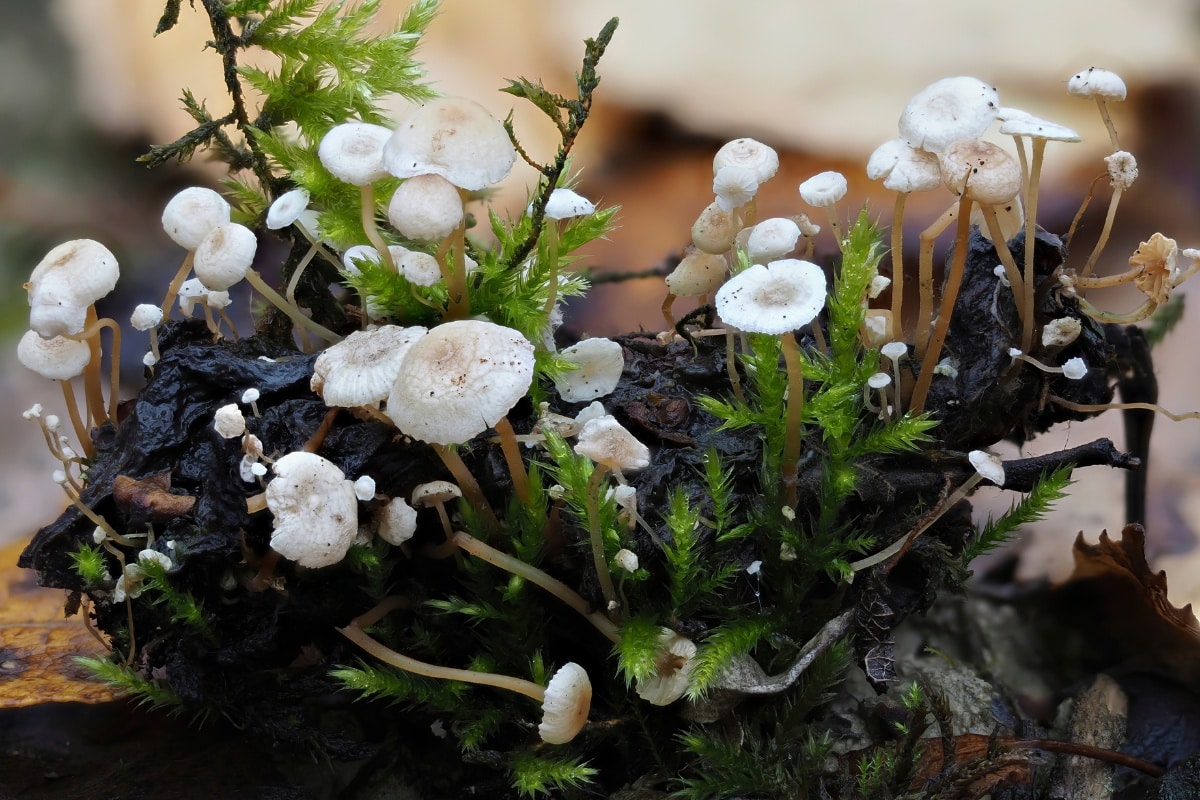
Strobilurus
This is a small group of small, pinwheel like mushrooms that look a lot like Marasmius species. Strobilurus species, though, grow exclusively on (or sometimes around) pine cones.
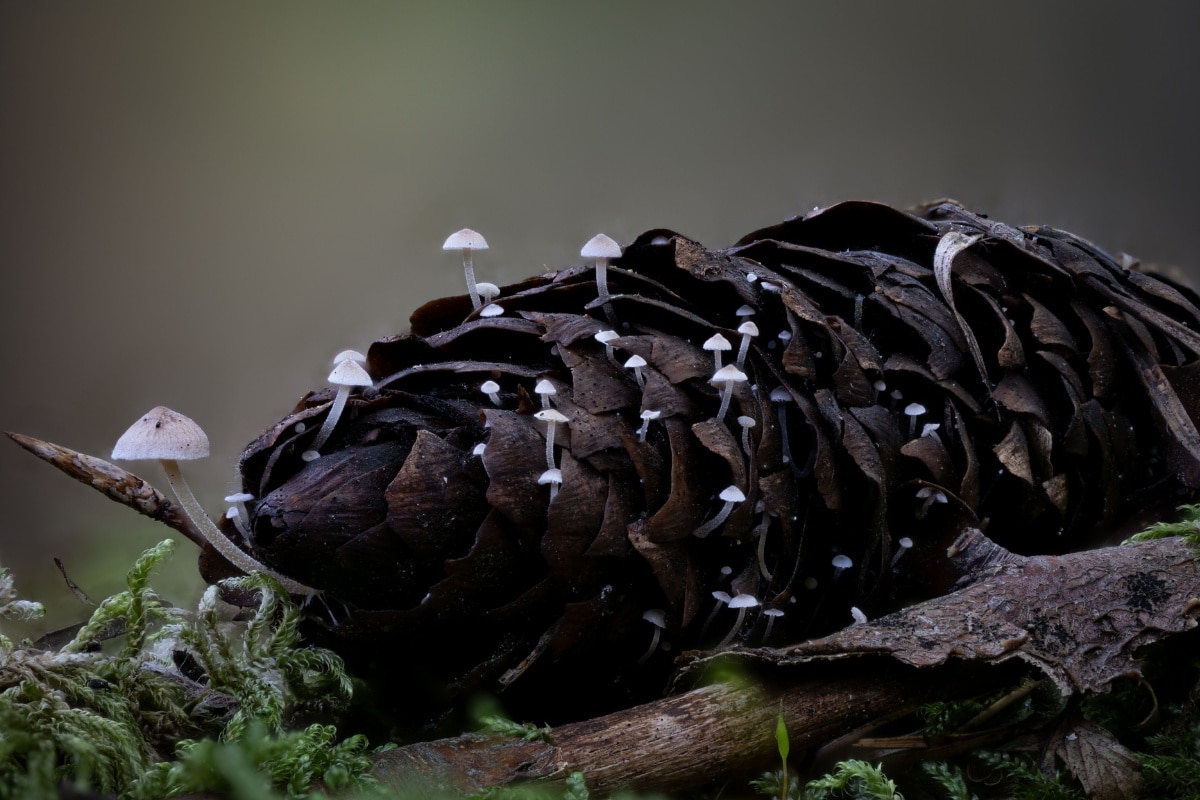
Common Questions About Marasmius Mushrooms
Are all Marasmius mushrooms edible?
No, not all Marasmius mushrooms are edible. In fact, most of them aren’t. Marasmius oreades, or the fairy ring mushroom, is the most well-known edible species. However, they have some dangerous lookalikes, so you have to be careful foraging for them.
How do Marasmius mushrooms contribute to forest ecosystems?
Marasmius fungi are important in forest ecosystems because they decompose leaf litter and woody debris. This process helps recycle nutrients back into the soil, which supports the health of the forest. They are especially key in maintaining nutrient cycles in temperate deciduous forests.
What are some key features for identifying Marasmius mushrooms?
Marasmius mushrooms have small caps that are usually 1 to 5 inches wide. The gills are spaced apart, and their spore prints are white. These mushrooms have tough, wiry stems that can bend without breaking. You’ll often find them growing on leaf litter, grass, or conifer needles.

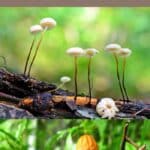
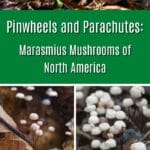
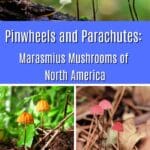
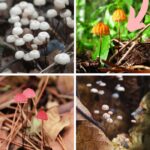

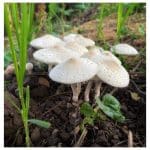
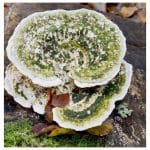
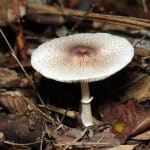
Leave a Reply